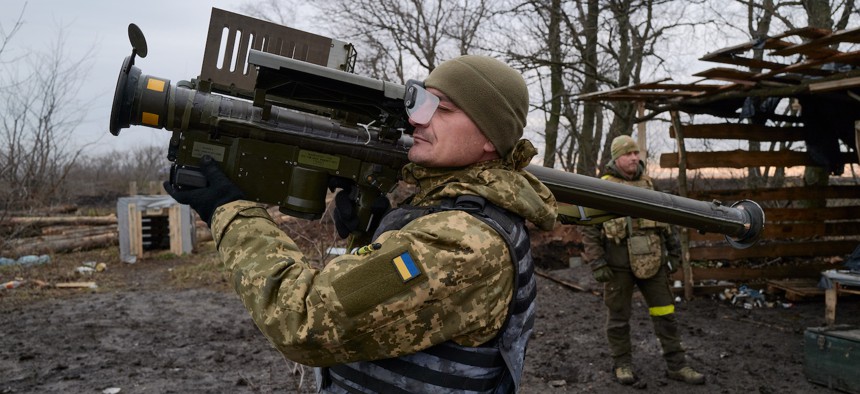
A Ukrainian soldier with a U.S.-made Stinger MANPAD (man-portable air-defense system) in Bakhmut, Ukraine, on December 29, 2022. Pierre Crom / Getty Images
Raytheon Calls in Retirees to Help Restart Stinger Missile Production
The shoulder-fired missile is one of the weapons that’s been credited with getting Ukraine through the early days of the Russian invasion.
Raytheon has called in retired engineers to teach its employees how to build the Stinger missiles heavily used by Ukraine’s military—using blueprints drawn up during the Carter administration.
It’s the latest example of a private company working to ramp up production of a now-in-demand weapon that the Pentagon hasn’t purchased in decades.
“Stinger's been out of production for 20 years, and all of a sudden in the first 48 hours [of the war], it's the star of the show and everybody wants more,” Wes Kremer, the president of RTX’s Raytheon division, said during an interview last week at the Paris Air Show.
The United States has sent nearly 2,000 of the heat-seeking missiles to Ukraine, which has used them to shoot down Russian aircraft. All of those missiles have come from U.S. military stockpiles. And the Biden administration said this week it will send even more Stingers to Ukraine.
When the U.S. Army placed an order for 1,700 Stingers in May 2022, the Pentagon said the missiles wouldn’t be delivered until 2026. Kremer said it will take about 30 months for Stingers to start rolling off of the production line largely because of the time it takes to set up the factory and train its employees.
“We were bringing back retired employees that are in their 70s … to teach our new employees how to actually build a Stinger,” Kremer said. “We're pulling test equipment out of warehouses and blowing the spider webs off of them.”
On top of that, the electronics used in the missile are obsolete, said RTX CEO Greg Hayes.
“We're redesigning circuit cards [and] redesigning some of the componentry,” Hayes told Defense One in a June 14 interview. “That just takes a long time.”
While engineers these days often tout 3D printing and automation as a way to speed up the manufacturing process, that’s not possible with the Stinger—because doing so would not only mean redesigning the weapon, but also undergoing a lengthy weapon certification process.
“You'd have to redesign the entire seeker in order to automate it,” Kremer said.
That means they must build the weapons the same way they were built four decades ago: including installing the missile’s nose cone by hand.





